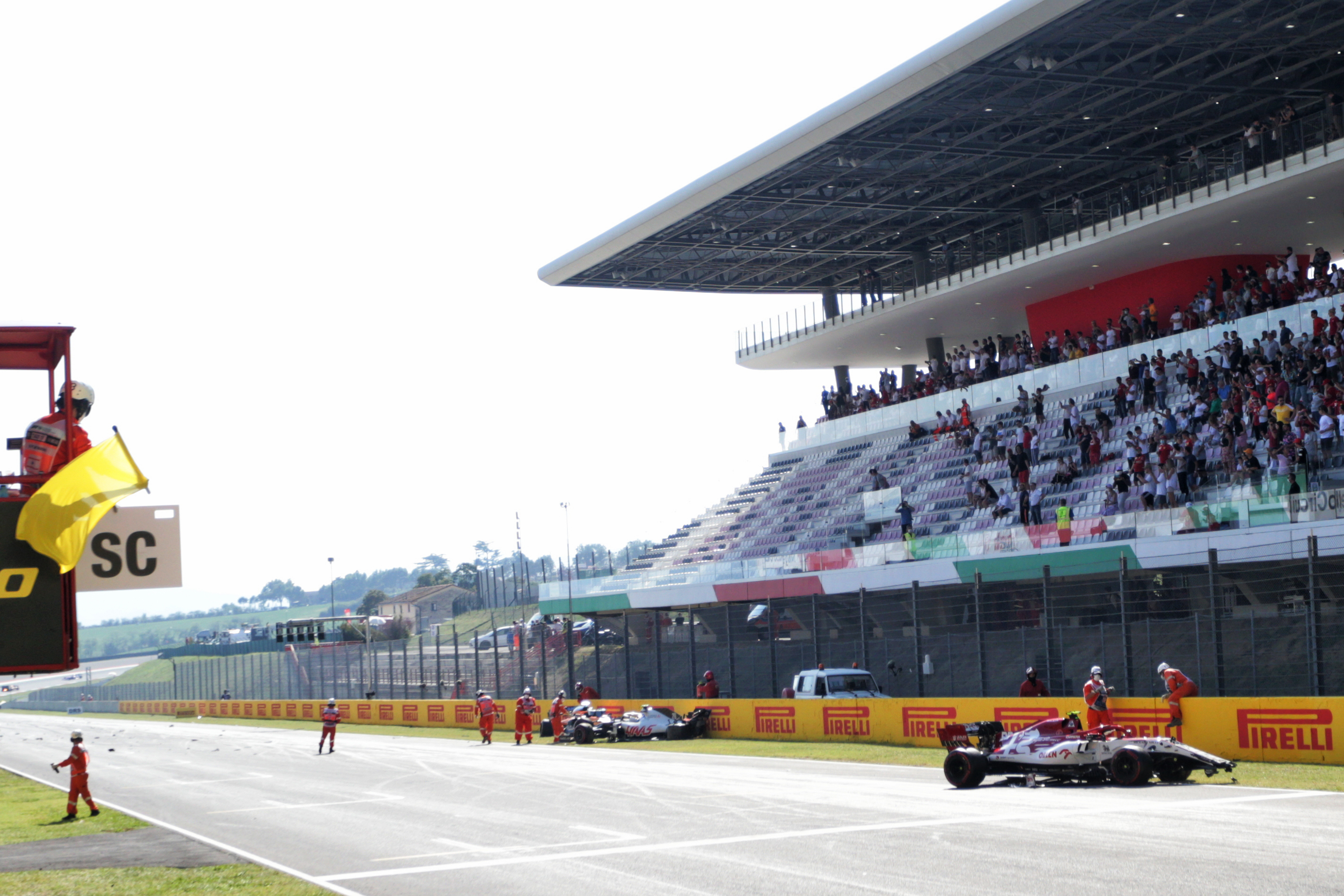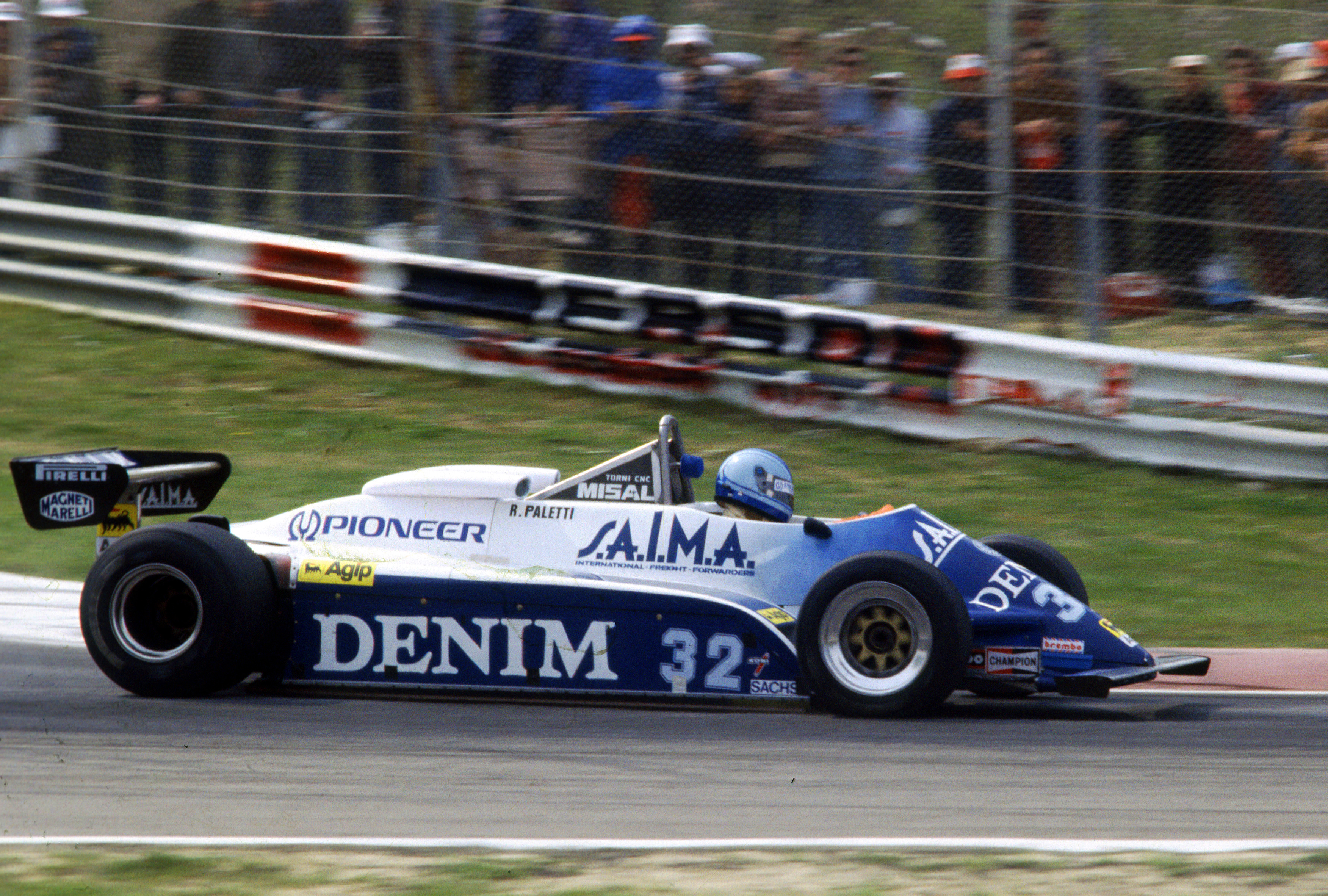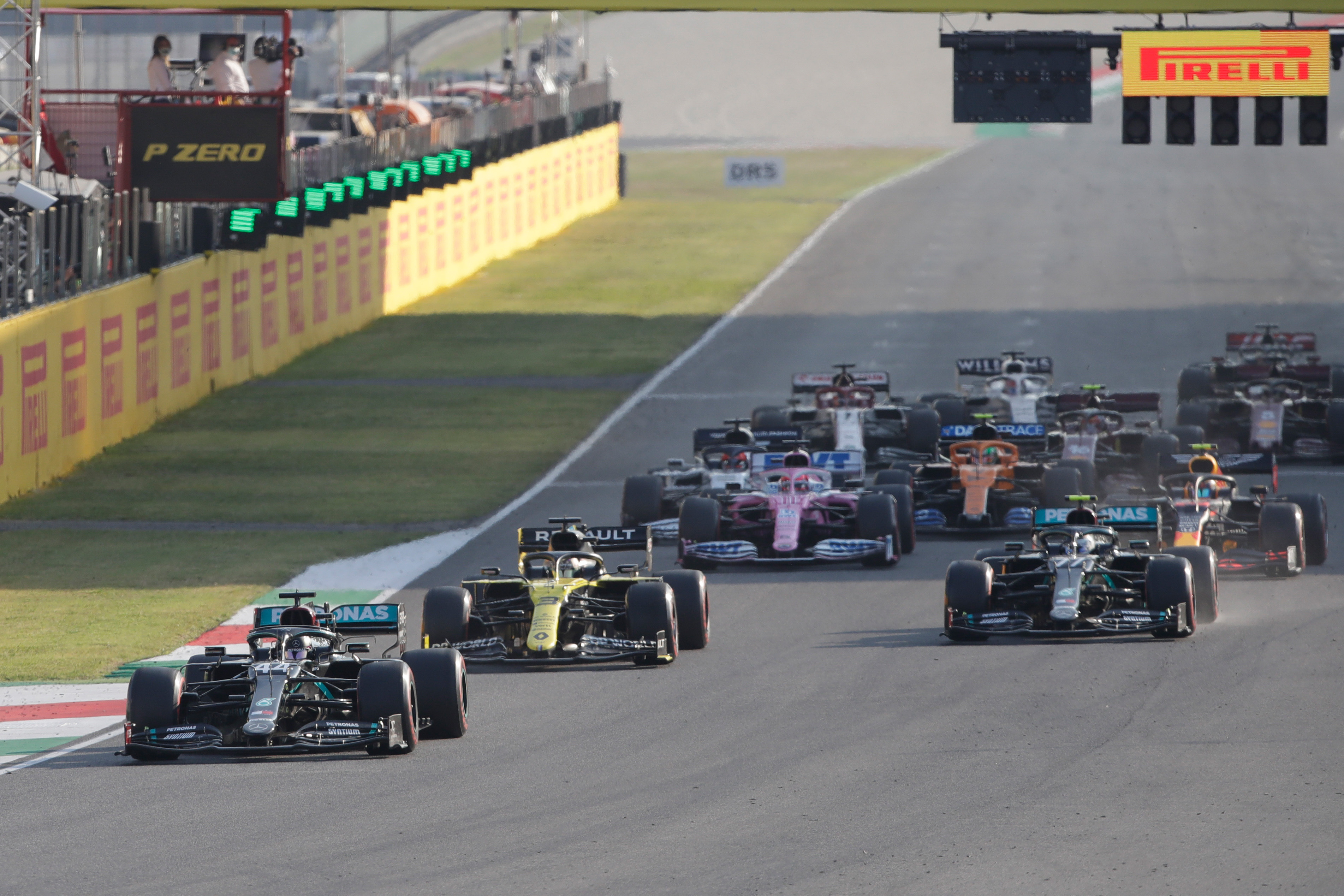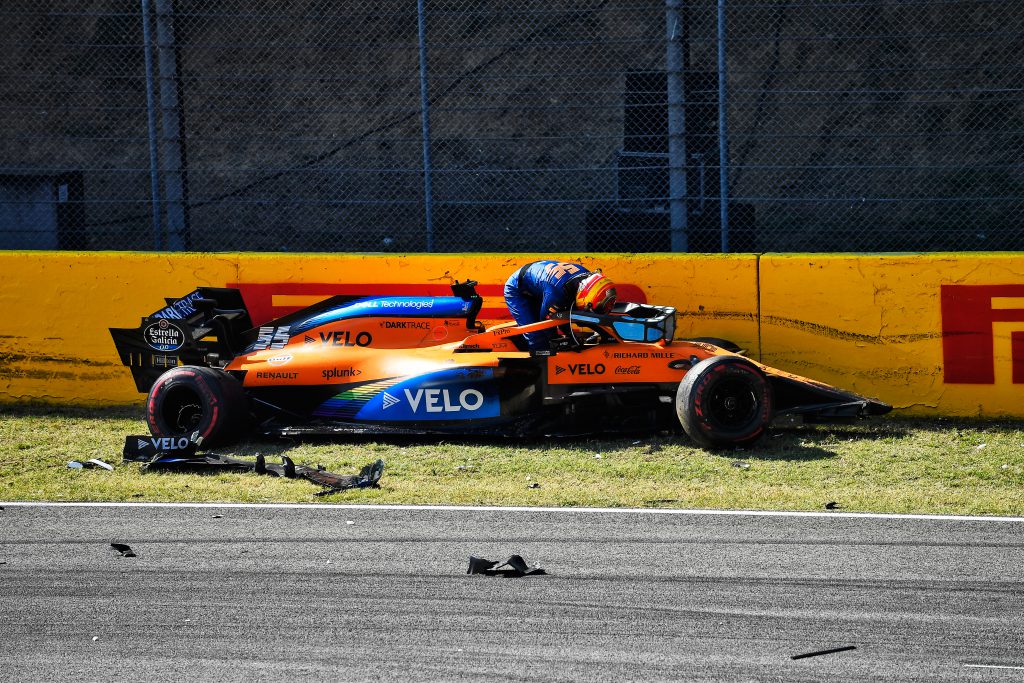Up Next

Formula 1’s first visit to Mugello gave us everything we expected from it and a bit more, even though my biggest criticism is that the DRS still led to too many ‘mirror, signal, manoeuvre’ overtakes on the straight.
As far as real overtaking was concerned, it was good to see two cars side by side into the first corner, where the little bit of banking was just enough to mean that there were two lines through there.
The outside one was probably just about the fastest because, if you could hang in there, there seemed to be better traction off the corner. And, of course, you were on the inside for the next left-hander.
The end result was more or less the same as most of the rest of the races for the last seven years in that Mercedes was simply better than the rest. But it was good to see Alex Albon get his first podium so now he can brag about being an F1 top-three finisher.
The real problem was how Sainz’s McLaren submarined under Giovinazzi’s Alfa Romeo
For Albon’s Red Bull team-mate, it was not all fun. Max Verstappen made a good start, then a loss of power led to him being involved in a midfield skirmish into the second corner. This led to the first safety car and from there on in all hell broke loose.
Some drivers are complaining bitterly that the FIA is trying to make a spectacle out of restarts.
Perhaps so, but there are bigger problems that I believe need to be addressed from what we saw in the crash that are not being talked about. That’s these low noses.

As far as the restarts are concerned, once the safety car lights go out everyone knows it is coming into the pits. From that point, the drivers are in control of what happens next.
Yes, Mugello is unusual in that it offers a great tow down the front straight but that’s part of racing and lots of circuits do exactly the same. As I’ve said many times: there are two pedals in these cars, one to go fast, the other to slow down.
The driver leading the pack at that time sets the pace. You can’t overtake until the start finish line so Valtteri Bottas was backing everyone up to leave less straight for Lewis Hamilton to tow past him.
But what he didn’t know was that it had all kicked off behind him. Everyone wants to make up places and we all know track position is critical given overtaking is difficult with these cars.
Watching from Kevin Magnussen’s point of view, he did everything right (not something that’s often been said lately). So did Nicholas Latifi, but behind them I would say Antonio Giovinazzi and Carlos Sainz Jr didn’t react quickly enough when Magnussen had to slow down to miss George Russell.
Yes, it’s difficult but in those circumstances you have to be aware that anything can happen so you need to be on your toes. Sainz had lost a lot of ground in the melee that brought out this safety car, so he was on a mission to recover some of it. There’s nothing wrong with that and he is there to race.
But the real problem was how Sainz’s McLaren submarined under Giovinazzi’s Alfa Romeo.
Onboard with @Carlossainz55 for *that* dramatic crash after the restart at Mugello 👀 💥#TuscanGP 🇮🇹 #F1 pic.twitter.com/erYwe3NGvZ
— Formula 1 (@F1) September 13, 2020
Basically, the front of his car acted like a snowplough and Giovinazzi’s car – as well as a big part of his front wing – was on the top of the front of Sainz’s chassis. Luckily the halo was there to divert the big bits.
Although the speed of the cars at that time was probably well in excess of 100mph, the speed differential between them was fairly small. But it was still a serious accident.
Can you imagine if something like this happens on a grid start when a frontrunner doesn’t get away properly and a car coming from behind is unsighted and goes underneath the rear of the stalled car?
Yes, I know the marshals will be waving a yellow flag beside the stalled car but I’m pretty sure we all know that’s the last thing a driver will be looking at and it’s easy for those down the back to be unsighted.
We’ve seen accidents like this before, most tragically when Riccardo Paletti (pictured below) was killed in Canada in 1982 after piling into the back of Didier Pironi’s stalled Ferrari. There’s no lack of examples of accidents where this kind of thing happens – looking outside F1, remember what happened in Billy Monger’s terrible crash in Formula 4 at Donington Park in 2017.

The same thing happened in the earlier accident at Mugello’s second corner. One car went underneath another – Kimi Raikkonen’s on Verstappen’s Red Bull. It’s the same effect that you see when a car lifts the protective conveyor belts retaining the tyre wall and disappears underneath them.
This low nose regulation was put in place to reduce the risk of one car flying over the top of another like Mark Webber when he ran into the back of Heikki Kovalainen in Valencia in 2010.
My argument is, yes the low nose will reduce the risk of that happening but there are many other crash scenarios that these cars need to withstand. And on top of that, it looks a bit stupid with the droopy nose at a very acute angle to where it joins the chassis. But that’s only my aesthetic opinion.
With the changes coming into place for 2022, it is an ideal time to look at this situation. As I have suggested on many occasions, to me the nose height, the rear impact structure height and the main chassis side intrusion panel should all be based on axle height. Give all that a common position and at least if one car does run into the back or side of another car, the main impact absorbing structures will meet up.

After that attempt at restarting the race behind the safety car, the FIA red flagged the race following the other two big incidents of the day.
The first red flag was necessary to clean up the track of four stricken cars and a bunch of parts from the accident on the pit straight that everyone had just gone through.
The second one when Lance Stroll’s Racing Point careered off the track at Arrabbiata 2. This was a very high-speed accident and it is believed it was caused by a puncture.
LAP 44/59
Stroll crashes at Turn 9 😮#TuscanGP 🇮🇹 #F1 pic.twitter.com/dHFWM2KdTH
— Formula 1 (@F1) September 13, 2020
If so, that puncture was probably caused by debris from the earlier accident at the Luco corner or the pit straight accident. It’s impossible to clean all those carbon shards that get spread everywhere when there is an accident.
Either way, it was a big accident for Stroll and it just shows how the structure of these cars has evolved since Ayrton Senna’s death in Imola in 1994. The impact broke the gearbox off the back of the engine and made a mess of the conveyor belt and tyres.
Both red flags were necessary for safety grounds and I applaud the FIA for sticking to its guns on that.
But one other thing I would like to see changed is the rule on tyre changes under red flags. For me, you should be able to change tyres on safety grounds, but they must be of the same compound you took off. That way no one picks up a lucky advantage from someone’s else’s misfortune.
I don’t buy into the suggestion that if that was the regulation that you couldn’t run your weekend to make sure you always had a set of each compound available. After all, most teams will use four sets of softs over the qualifying sessions and I’’m sure there would be a medium and hard set available that has had minimum use. No one says they need to be new.
Despite my concerns, I enjoyed Mugello. Let’s hope it gets a regular spot on the schedule, but more importantly please, please make sure that some bright spark doesn’t suggest on getting rid of all the gravel traps…



